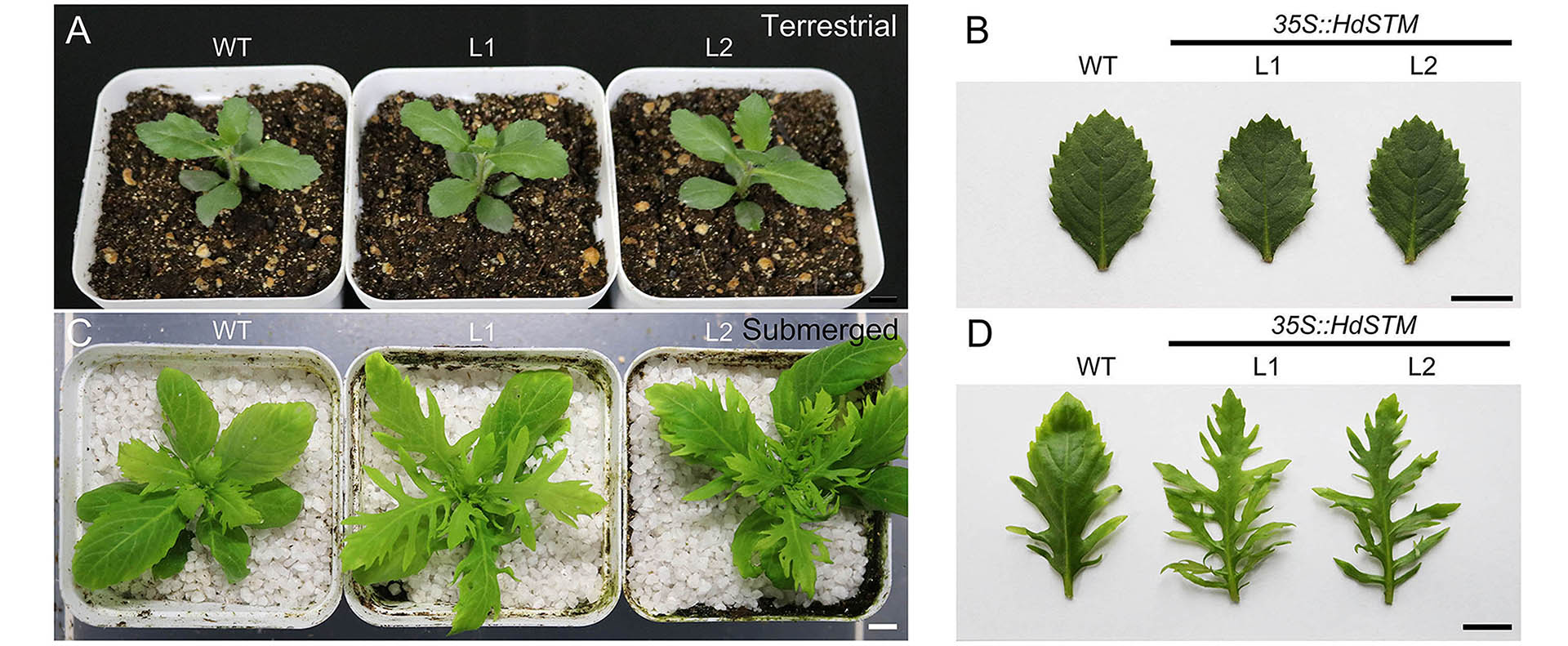
Newsroom
SHOOT MERISTEMLESS Participates in Heterophylly of Hygrophila difformis (Acanthaceae)
Heterophylly, the plasticity of leaf form in response to environmental conditions, occurs in aquatic and amphibious plants where it modulates leaf form, gas exchange and photosynthesis, providing a good model for plant acclimation to environment.
Although heterophylly was widely seen in nature, no transgenic studies have been performed yet and its molecular mechanism is largely unknown. Hygrophila difformis (Acanthaceae) has recently merged as a plant model to study heterophylly due to its typical phenotypic plasticity to various ecological factors, but the mechanisms are still lacking.
A research team led by Prof. HOU Hongwei from the Institute of Hydrobiology (IHB) of the Chinese Academy of Sciences provided genetic evidences on the molecular mechanism of heterophylly in H. difformis. The study was recently published in Plant Physiology.
In this study, researchers first cloned the KNOTTED1-LIKE HOMEOBOX family gene SHOOT MERISTEMLESS (STM) from H. difformis and verified that its expression changed with environmental factors. They performed ectopic overexpression of HdSTM in Arabidopsis thaliana and found that transgenic plants increased leaf complexity.
Subsequently, the researchers overexpressed HdSTM in H. difformis and found that transgenic plants induced quick leaf variations in submergence, while knockdown of HdSTM led to disturbed leaf development and weakened heterophylly.
Hou’s team further detected the expression pattern of CUP-SHAPED COTYLEDON3 (CUC3) in H. difformis and found that HdCUC3 had the same spatiotemporal expression pattern as HdSTM. Finally, biochemical analysis revealed a physical interaction between HdSTM and HdCUC3.
This study provided the genetic evidence that HdSTM is involved in regulating heterophylly in H. difformis. At the molecular level, HdSTM plays a role in plant heterophylly development and reveals a fundamental aspect of leaf shape control that is co-opted to allow plant acclimation to the environment.

Genetic evidences verified that HdSTM participates in regulating heterophylly (Image by IHB)
(Editor: MA Yun)